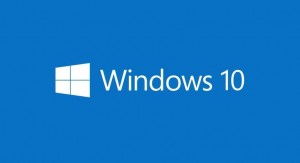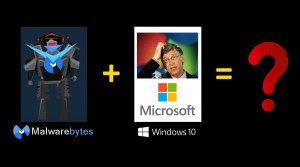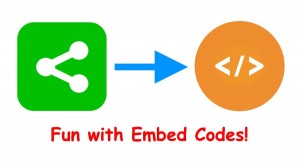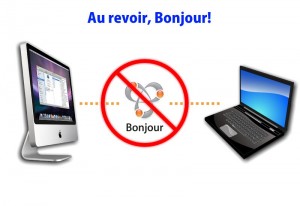26 July 2015 | Computers |
 If you have Windows, you probably have some kind of anti-virus or anti-malware software installed.
If you have Windows, you probably have some kind of anti-virus or anti-malware software installed.
If you purchased your computer instead of building it yourself, your system will most likely have come pre-installed with McAfee or some other product.
Well, everybody has their opinions on the question of security. Some people prefer Kaspersky, some love Norton, others swear by Avast. I don’t know anyone who swears by McAfee…
I’ve used all of these over the years, and I’ve managed quite a few computers in my day.
So, what’s the best antivirus and anti-malware software out there?
(more…)
19 July 2015 | Computers |
 In just 10 days, Microsoft will officially unveil their latest OS, Windows 10.
In just 10 days, Microsoft will officially unveil their latest OS, Windows 10.
Windows 10 comes after the much-hated Windows 8, so many people are wondering if it’s actually worth the upgrade.
I can’t tell you if the upgrade is right for you, because I’m not sure I even have the final build as a “Windows Insider” (I have been testing Win 10 builds on my laptop as they are released for some time now).
I can tell you some simple facts that will help you make up your mind, and hopefully cut through some of the rather ridiculous hype that has popped up in recent days related to the new OS.
(more…)
12 July 2015 | Computers, Networking |
 If you have a web site, you’re probably using Google Analytics to track traffic to your site.
If you have a web site, you’re probably using Google Analytics to track traffic to your site.
Overall, Google Analytics is pretty cool. In fact, for most people, it’s too cool. It does a whole lot, but that means it’s rather complicated for the average user to set up properly.
You may have noticed in your site stats on GA that there are some wonky domains showing up.
For example, instead of GA reporting traffic from ScottiesTech.Info, mine shows me that domains like makemoneyonline.com are included in my stats.
What gives, and how do you fix it?
(more…)
28 June 2015 | Computers |
 For those of you who are test-driving the Windows 10 Technical Preview, you may have noticed that Malwarebytes Anti-Malware stopped working.
For those of you who are test-driving the Windows 10 Technical Preview, you may have noticed that Malwarebytes Anti-Malware stopped working.
It won’t launch at start-up, and if you try to manually run it, you get some weird error about some memory location, blah-blah-blah, or something similar. Basically, it craps out on you.
If you try to uninstall Malwarebytes, you get the same error. If you try to install the same version – or even a newer version – you still get the same error.
Well, Malwarebytes released a newer version recently that is being sent out to users at the moment, and it addresses this problem. But autoupdating won’t work if MBAM won’t run!
So, how do you fix it?
(more…)
14 June 2015 | Computers, Do-It-Yourself, SuperSaver |
 Let’s say you’ve got an aging laptop. It doesn’t exactly run like new any more. Maybe the battery is a bit weak even on a full charge, or perhaps the fan makes a lot of noise even after you cleaned it out.
Let’s say you’ve got an aging laptop. It doesn’t exactly run like new any more. Maybe the battery is a bit weak even on a full charge, or perhaps the fan makes a lot of noise even after you cleaned it out.
Traditionally, you’d have to pay a pretty penny for new laptop parts.
You’d also have a hard time finding instructions or guides on how to remove and replace any parts in your lappy.
Well, nowadays, things are a bit different.
You can get all kinds of laptop parts on the cheap, and all the how-to guides you’ll need are already out there just waiting for you on YouTube!
(more…)
26 May 2015 | Computers, Programming |
 You have probably encountered embed codes before, but they may seem like a bit of a mystery.
You have probably encountered embed codes before, but they may seem like a bit of a mystery.
An embed code is, in short, a bit of HTML that allows you to embed part of another web site on your own – like a YouTube video, for example.
Embed codes come in two general flavors these days, and each has its strengths and weaknesses.
So, how do embed codes work? Why are some hugemongous, and others teeny-tiny? Are iframe tags really the spawn of the devil?
Read on!
(more…)
17 May 2015 | Computers, Networking |
 Everybody uses Google these days for all kinds of things. If it isn’t search, it’s Google Maps, plotting the fastest route to your vacation destination, checking the weather, or letting your Android phone track your every movement to make Google Now services “useful”.
Everybody uses Google these days for all kinds of things. If it isn’t search, it’s Google Maps, plotting the fastest route to your vacation destination, checking the weather, or letting your Android phone track your every movement to make Google Now services “useful”.
It’s pretty much a certainty that Google is tracking your every move. This is the price you pay for all these wonderful whiz-bang features that you have come to rely upon.
If you do value your privacy, there are a few tricks you can use. But, a word of warning: it’s probably much worse than you think.
(more…)
14 May 2015 | Computers, Networking |
 Bonjour is Apple’s way of doing zero-configuration networking. It’s a bit of software that does three things:
Bonjour is Apple’s way of doing zero-configuration networking. It’s a bit of software that does three things:
- Service discovery on the local network (LAN)
- IP address assignment/sharing
- Hostname resolution
Normally, things like IP address assignment are handled by DHCP. With Bonjour, the idea is that all you have to do is plug your gizmos in, and turn them on. Bonjour will then “scan” the network, and all devices and services on the LAN will be automagically configured for you. Each gizmo will have an automatically configured IP and hostname, and you’re done.
This is great, except when you don’t want Bonjour to do its thing. Perhaps you have a mostly Windows/Linux LAN, or you want to restrict access to a certain group of computers on your LAN that are separated from the rest by a physical home router/firewall. Bonjour makes this rather difficult, since it sneaks by basic IP/MAC filtering you might set in your router.
So, how do you block Bonjour?
(more…)
30 April 2015 | Computers |
 Note: For resizing and posting or e-mailing many images at once, see: How to Easily Resize Images in Windows
Note: For resizing and posting or e-mailing many images at once, see: How to Easily Resize Images in Windows
There is another little problem I see a lot: How does one resize and/or crop an image to a specific custom pixel size in order to post it online somewhere, or to send in an e-mail, or whatever?
Of course, most online services and social networking sites will automagically resize and compress your images for you, and the they often even let you crop the image right there on their site.
But, sometimes you need to create an image of a specific size, like when creating a Facebook-friendly image.
Fortunately, it turns out that there is a fairly easy and completely free way to do it without any extra software!
(more…)
20 April 2015 | Computers, Programming |
 Ah, yes. Facebook and images!
Ah, yes. Facebook and images!
You know the drill: You share a link, and you expect that an image from the page you shared will show up.
But, it doesn’t.
This is especially true if you’re sharing a link from a lesser-known site, like perhaps your own blog or online store.
Fortunately, there are a few tricks you can use to make Facebook – and other social networking sites – happy.
(more…)
 If you have Windows, you probably have some kind of anti-virus or anti-malware software installed.
If you have Windows, you probably have some kind of anti-virus or anti-malware software installed.










Recent Comments